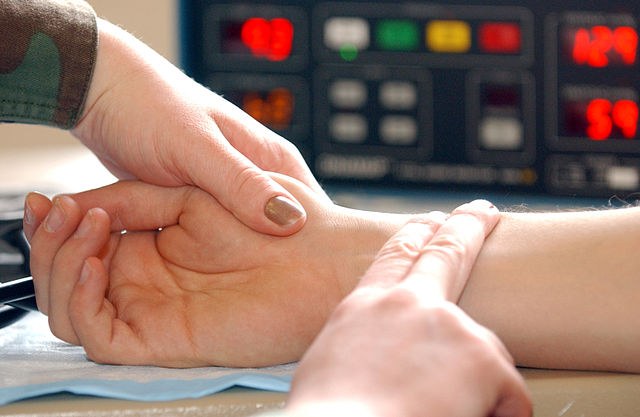Heart rate or pulse rate indicates the number of heart beats per minute. For each child the heart rate of an individual. It depends on the size of the body, physical health, medication, air temperature, and even the fact that you are sitting or standing. The pulse is also affected by emotions, as in stress situations and in danger heart rate accelerated.
In newborns, the frequency of the pulse is quite high - 140-160 beats per minute aged 1 to 2 years, normal heart rhythm 110-120 beats. For children aged 2 to 5 years heart rate at rest is considered normal from 86 to 112 beats per minute, and ranging in age from 5 to 15 years, the figure is 70-100 beats per minute. At the upper value of the load on the heart and other organs increases. Teenagers actively involved in sports and having a great physical shape, the rest can observe a decrease in heart rate to 40 beats per minute. And it is also considered a normal variant. To calculate the maximum allowable heart rate in a child there are two formulas:
220 - age is for a child 15 years is: 220-15=205; or
206.9 - (0.67 x age) i.e. for a child of 15 years is: 0.67 x 15 = 10.5, and 206.9 - 10.5 = 196.4.
A second formula from a medical point of view is more accurate, but the first is easier to remember. The calculation of the maximum allowable rate shows what the pulse is critical for the body and leads to heart failure. That is, for a child 15 years this figure is 196,4 beats per minute. I must admit that the heart rate rarely reaches its maximum level and these data are rather theoretical.
There are several ways to measure the pulse at the wrist, on the neck, groin or ankle, where the main large arteries. The most common way of measurement is at the wrist. To get an accurate result, put your finger on the inner wrist, where the veins lie, just a little bit and count the number of beats for 60 seconds. You can also measure the pulse for 15 seconds, obtained by multiplying the number of hits on 4, and for 10 seconds and multiply by 6, but the majority of doctors recommends to measure for a full minute cycle. Prior to measuring the pulse of the child is desirable is in a sitting position for at least 10 minutes, because the children are actively moving and the pulse may become rapid, but in 10 minutes he is usually restored.
The pulse must be measured on two hands. The asymmetry of the pulse indicates heart disease.
The normal heart rate for children up to 15 years
In newborns, the frequency of the pulse is quite high - 140-160 beats per minute aged 1 to 2 years, normal heart rhythm 110-120 beats. For children aged 2 to 5 years heart rate at rest is considered normal from 86 to 112 beats per minute, and ranging in age from 5 to 15 years, the figure is 70-100 beats per minute. At the upper value of the load on the heart and other organs increases. Teenagers actively involved in sports and having a great physical shape, the rest can observe a decrease in heart rate to 40 beats per minute. And it is also considered a normal variant. To calculate the maximum allowable heart rate in a child there are two formulas:
220 - age is for a child 15 years is: 220-15=205; or
206.9 - (0.67 x age) i.e. for a child of 15 years is: 0.67 x 15 = 10.5, and 206.9 - 10.5 = 196.4.
A second formula from a medical point of view is more accurate, but the first is easier to remember. The calculation of the maximum allowable rate shows what the pulse is critical for the body and leads to heart failure. That is, for a child 15 years this figure is 196,4 beats per minute. I must admit that the heart rate rarely reaches its maximum level and these data are rather theoretical.
If the child suffers from high blood pressure and pulse should be measured at the ankle.
How to measure the pulse
There are several ways to measure the pulse at the wrist, on the neck, groin or ankle, where the main large arteries. The most common way of measurement is at the wrist. To get an accurate result, put your finger on the inner wrist, where the veins lie, just a little bit and count the number of beats for 60 seconds. You can also measure the pulse for 15 seconds, obtained by multiplying the number of hits on 4, and for 10 seconds and multiply by 6, but the majority of doctors recommends to measure for a full minute cycle. Prior to measuring the pulse of the child is desirable is in a sitting position for at least 10 minutes, because the children are actively moving and the pulse may become rapid, but in 10 minutes he is usually restored.
